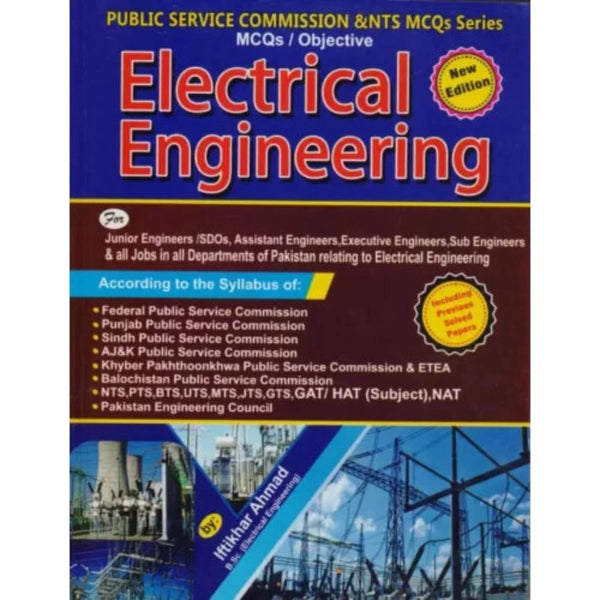Civil Engineering Reference Manual 14th By Michael R Lindeburg PE
- Publisher: ENGINEERING
- Availability: In Stock
- SKU: 50070
- Number of Pages: 816
Rs.2,670.00
Rs.3,595.00
Tags: affordable prices , best books , best books online , Best Price , best prices , Best Selling Books , best shop , Book Shop , Book shopping , bookshop , bookshop Multan , bookshop near me , bookshop online , bookshop online Multan , bookshopPakistan , buy online books , codes , compliance , construction management , construction projects , Convenient Shopping , cost estimating , dead loads , digital shopping , durability , earth's surface , engineering principles , essential guide , GIS technologies , good books , good booksonline , GPS , Internet Shop , land surveying , live loads , materials engineering , Michael R. Lindeburg PE , one stop shop , Online Book Shop , ONLINE BOOKS , Online Books Shop , online books store , Online Bookshop , Online Bookshop Pakistan , online bookstore , online shop , online shopping , Online Shopping Pakistan , OnlineShoppingPakistan , Pakistan Bookshop , PakistanBookshop , PakistanOnlineShopping , PE exam , price cut , price-friendly Comprehensive , professional reference , ReasonablePrice , reduced price , reference manual , regulatory codes , representation , safety , secure shopping , seismic loads , Shopping , ShopSmartPakistan , structural loads , surveying , transportation engineering , updated edition , Virtual Shop , water resources , wind loads
The "Civil Engineering Reference Manual, 14th Edition" by Michael R. Lindeburg PE is an essential guide for civil engineers preparing for the PE (Professional Engineer) exam. Known for its comprehensive coverage, the manual provides detailed explanations of key civil engineering concepts and practices. It encompasses a wide range of topics from structural analysis and design to geotechnical engineering, water resources, and construction management. This edition is updated to reflect the latest standards and codes, ensuring relevance and accuracy. The manual is a crucial resource for both exam preparation and as a reference in professional practice.
Key Points
1. Structural Analysis and Design
Structural analysis and design cover the principles of analyzing structures to ensure they can withstand applied loads. This includes methods for determining internal forces and designing structural elements to meet safety and performance standards.
2. Geotechnical Engineering
Geotechnical engineering focuses on the behavior of earth materials and how they interact with man-made structures. Topics include soil mechanics, foundation design, and earth retaining structures.
3. Water Resources Engineering
Water resources engineering deals with the management and movement of water in natural and engineered systems. Key areas include hydrology, hydraulics, and the design of water supply and wastewater treatment systems.
4. Environmental Engineering
Environmental engineering encompasses the development of systems and technologies to protect and improve environmental quality. This includes air and water pollution control, waste management, and sustainable design practices.
5. Transportation Engineering
Transportation engineering involves the planning, design, and operation of transportation systems, including highways, railways, and airports. It aims to ensure safe, efficient, and sustainable movement of people and goods.
6. Construction Management
Construction management covers the planning, coordination, and control of construction projects. Topics include project management principles, construction methods, and cost estimating.
7. Materials Engineering
Materials engineering focuses on the properties and behavior of construction materials such as concrete, steel, and asphalt. It includes material selection, testing, and quality control to ensure structural integrity and durability.
8. Surveying and Mapping
Surveying and mapping involve the measurement and representation of the earth’s surface. This includes techniques for land surveying, GPS, and GIS technologies used in planning and construction.
9. Structural Loads and Load Paths
Understanding structural loads and load paths is crucial for designing buildings and structures that can safely carry various loads. This includes dead loads, live loads, wind loads, and seismic loads.
10. Standards and Codes
Adherence to standards and codes is essential for ensuring safety and compliance in civil engineering projects. This key point addresses the importance of staying updated with the latest industry standards and regulatory codes.
The "Civil Engineering Reference Manual, 14th Edition" by Michael R. Lindeburg PE is an invaluable resource that provides a thorough foundation in civil engineering principles and practices. Whether for exam preparation or as a professional reference, it equips engineers with the knowledge and tools necessary to succeed in their fie





















